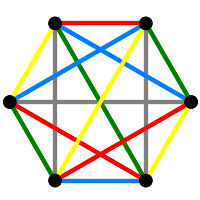Section1.1Getting Information
The Sage tutorial is the best starting point, and is very easy to read. The “Constructions” manual is of very little use for graphs. The Sage reference manual is vast. You will eventually need to read the sections on graphs, matrices, vector spaces, finite fields, power series and commutative rings.
If you are not up to speed with python, there are many books and web pages offering help. One web offering we like is the set of notes by Heinold. (For our purposes you can ignore the material there on graphics.) The Python Tutorial can be useful as a reference. You need to become comfortable with lists, dictionaries and list comprehensions. You can get quite a way in Sage without knowing anything much about objects and classes, but you will definitely need some familiarity with Python.
If you run into trouble with trying understand a particular command, do not forget that it might be a Python command; reasonably enough these are not explained in the Sage docs.
